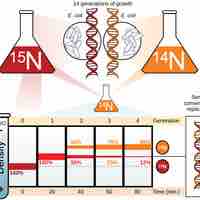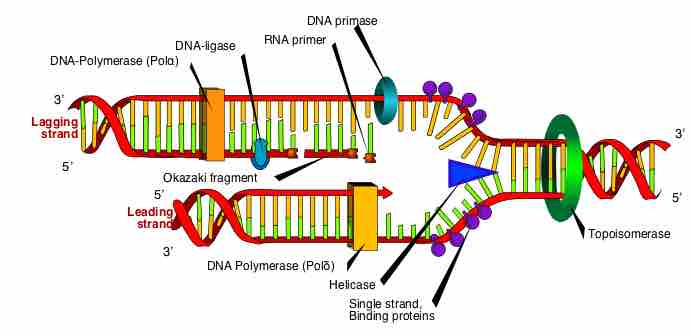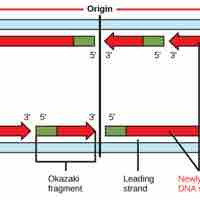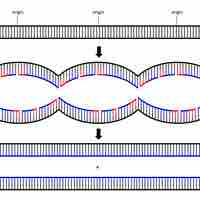Section 3
DNA Replication
Book
Version 32
By Boundless
By Boundless
Boundless Biology
Biology
by Boundless
4 concepts

Basics of DNA Replication
DNA replication uses a semi-conservative method that results in a double-stranded DNA with one parental strand and a new daughter strand.

DNA Replication in Prokaryotes
Prokaryotic DNA is replicated by DNA polymerase III in the 5' to 3' direction at a rate of 1000 nucleotides per second.

DNA Replication in Eukaryotes
DNA replication in eukaryotes occurs in three stages: initiation, elongation, and termination, which are aided by several enzymes.

Telomere Replication
As DNA polymerase alone cannot replicate the ends of chromosomes, telomerase aids in their replication and prevents chromosome degradation.